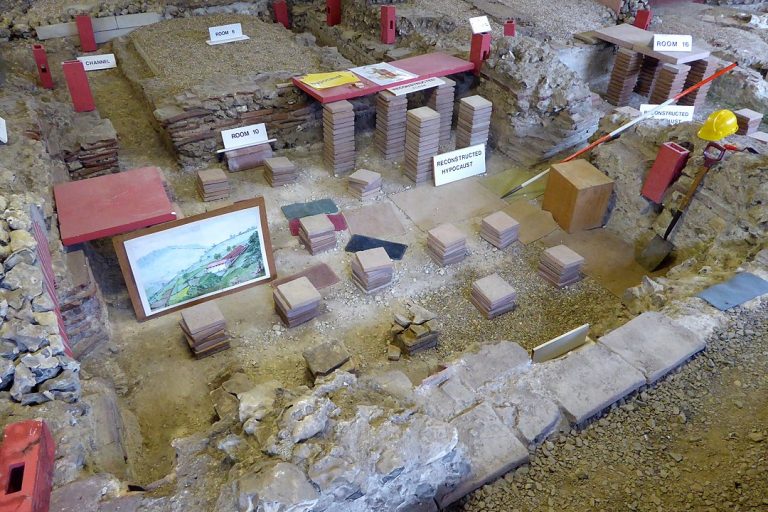- Home
- Local History
- Romans in Orpington: Crofton Roman Villa
Romans in Orpington: Crofton Roman Villa
Written by Pam Preedy.
Just next to Orpington Railway Station is a hidden gem, Crofton Roman Villa. We know that Britain was conquered by the Romans. Julius Caesar came twice; in 55BC when he stayed for three weeks and again a year later when he stayed for 12 weeks. The Romans did not return for nearly 100 years, but Britain was a prize beckoning them; they anticipated rich rewards.
According to Julius Caesar, “The Britons have a huge number of cattle, they use gold coins or iron bars as their money, and produce tin and iron” – rich pickings for anyone who could conquer the country.
In 43 AD Claudius did just that – he came, he saw, he conquered (attributed to Julius Caesar, but probably better describing Claudius). Throughout Britain there are rich remains of their time here. Orpington and Bromley have plenty of evidence of Roman occupation, and a fully excavated villa at Lower Warbank, Keston, just four miles away from Crofton.
As the tribes of Britain were overcome, wealthy families settled here: the villa at Darenth had nearly 100 rooms covering six acres. Retired Romans soldiers also settled creating farmsteads of various sizes, to exploit the good soils. We have all heard of Lullingstone Villa, near Eynsford. Crofton is less well-known, but it is only a couple of minutes from Orpington Railway Station, adjacent to the station’s car park.
First discovered in 1926 (when workmen were preparing a driveway for new council offices and unearthed some Roman artefacts), preliminary investigations established the existence of the villa, but it was not fully investigated until 1988. It was then fully excavated by the Kent Archaeological Rescue Unit (KARU) and finally unveiled in 1996. It is now protected within a modern building. The villa, built on an elevated position overlooking the River Cray, survived for nearly 250 years between approximately 140 AD and 400 AD. It was the centre of a farming estate of about 500 acres, with farm buildings nearby, surrounded by fields.

In the same way that houses today are renovated, extensions built, rooms divided and subdivided, Crofton Villa was altered several times during its years of occupation. At first (140-170 AD), it was just a modest dwelling with five large rooms. It was unpretentious, covering an area at least 10m x 30m. Some years later, one of the rooms was subdivided and a large new room and a concrete floor were added. By 200 AD it had undergone a major rebuilding programme and new rooms were added, bringing the number up to about 20 rooms. This must have been the height of its prosperity, for in the third century, Room 15 to the south-west was abandoned. Gradually, northern parts of the villa were abandoned and much of the southern end was rebuilt with hypocausts added for heating – perhaps due to a cooling climate. This seems to have matched the decline in prosperity of the villas at Darenth and Farningham. Finally, at the end of the fourth century, the dwelling fell into complete decline, gradually collapsed and was slowly buried under the soil.
The remains of ten rooms are on view today, and Crofton Roman Villa is scheduled to reopen on Tuesday 5th April (Covid permitting) and will be open on Tuesdays and Wednesdays. It is staffed and managed by volunteers of the Kent Archaeological Rescue Unit. In 1994 the Unit won two national awards for its excavation and preservation of the Villa, the only one on show to the public in Greater London.
Further your research
I would definitely recommend a visit to the Bromley Museum (1st Floor of Bromley’s Central Library) as well a visit to the Crofton Roman Villa itself to learn more about the Romans in Bromley.
Originally published in Life in Orpington magazine (Issue 38, April 2022)

